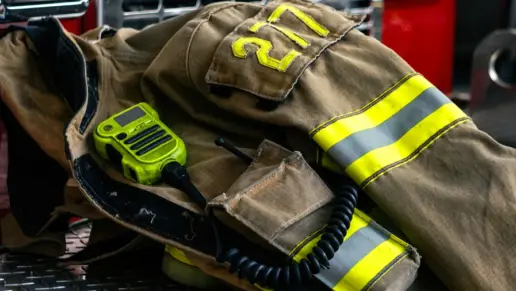Prescription drug abuse and addiction affects millions of people and their families nationwide. Prescription medications that have the most common misuse potential include opioids, depressants and stimulants.
Most people begin taking prescription medications to treat a legitimate condition. However, many medications can lead to physical and psychological dependence and eventually substance use disorders.
Fortunately, multiple options are available to assist anyone who wishes to stop taking prescription drugs, including inpatient, outpatient and virtual programs.
To help you discover the right prescription drug treatment program, it’s essential to learn more about the following:
- Criteria for prescription drug addiction
- Common prescription drug categories
- Prescription drug side effects
- Treatment options for prescription drug misuse and dependence
Prescription drug treatment options exist for all, regardless of their income level or location. Programs for loved ones of a person with substance use disorders are also available. Recovery can start today by connecting with a treatment provider.
What is Prescription Drug Addiction?
Prescription drug misuse affects people of all ages, even children. Misusing medications often leads to tolerance, dependence, and eventually addiction.
Most people need help from treatment professionals to quit using prescription medications once they’ve developed an addiction.
Stats on Prescription Drug Abuse
According to the National Institute on Drug Abuse, the results of the 2023 National Survey on Drug Use and Health revealed that over 14 million Americans misused prescription drugs in 2022.
Statistics on prescription drug use are alarming:
3.7 million
People misuse prescription stimulants
4.9 million
Misuse their prescriptions for sedatives
3.9 million
Misuse prescription benzodiazepines
8.7 million
Misuse prescribed pain relievers
Common prescription drugs that are abused among young people in middle or high school include amphetamines, sedatives, tranquilizers, and opioids. Over 1.5 million young people have prescription drug use disorders.
Prescribed Use vs Abuse
There’s a thin line between using and abusing prescription medicines. Some people cross that line if their tolerance to prescription medicine increases.
This means they need more of the drug to feel the same medicinal effects. This is when many start abusing their prescription. Others take the medications for reasons other than the indication for which it was prescribed. For example, they may seek to get high from opioid pills, rather than taking them to manage pain.
According to the Diagnostic and Statistical Manual for Mental Disorders, Fifth Edition (DSM-5), the criteria for a substance use disorder includes the following:
- Taking more drugs and for longer periods than intended
- Having intense cravings for the medicine
- Trying to quit or cut back without success
- Continued use despite being unable to fulfill home, work, school or social responsibilities
- Using it despite causing relationship and interpersonal problems
- Unable to stop despite it causing or worsening physical or psychological issues
- Spending much of your time seeking, using, and recovering from drug use
- Giving up important activities to spend more time using prescription drugs
- Continued usage in dangerous situations
- Developing tolerance to the drug
- Experiencing withdrawal symptoms when trying to quit or going without the drug
Substance use disorders can be mild, moderate, or severe. Fortunately, effective prescription drug addiction treatment is available at all levels.
Prescription Opioids
Prescription opioids are substances used to treat pain, including acute and chronic pain conditions.
Commonly prescribed opioids include the following:
- Hydrocodone, such as Vicodin or Norco, is a schedule II medication to treat moderate to severe pain
- Oxycodone, such as Percocet or OxyContin, is typically used to treat severe pain when other pain relievers don’t work.
- Morphine is more potent than some other opioids and can treat acute and chronic pain conditions
- Fentanyl is more potent than morphine and is typically used to treat cancer related pain, but is currently found mixed into illicit drugs and causes many overdose deaths
Prescription opioids are prescribed to treat acute, sub-acute, and chronic pain conditions.
Acute pain is usually due to an accident or injury in which the pain is temporary and medication use doesn’t last longer than a few weeks. Sub-acute pain lasts longer than a month but no longer than 3-4 months. Again, prescription medication is meant to be temporary.
For chronic pain conditions, a person may receive a prescription opioid for longer than three months. Chronic pain can be related to disease, injuries, and inflammation.
Side Effects of Prescription Opioids
Side effects of prescription opioids can be mild, moderate, or severe.
While different for everyone, side effects may include the following:
- Constipation
- Nausea and vomiting
- Sedation
- Dizziness
- Confusion
- Depression
- Low sex drive
- Muscle weakness
The type and amount of opioids a person consumes directly impact the side effects and their severity. Taking too much of an opioid medication can lead to overdose, coma, and death.
Prescription Opioid Treatments
Treatment for prescription opioid abuse exists at all levels of care. Inpatient detox and rehab are recommended for those who are at risk of moderate to severe withdrawal symptoms.
Outpatient programs are recommended for those with mild withdrawal symptoms and strong support systems in their home environment. Typical prescription drug treatments in inpatient and outpatient services include the following:
Medication-Assisted Therapy (MAT)
Long-term medications to treat prescription drug addiction play a significant role in recovery. They help with mental and physical stabilization so you can focus on learning recovery skills.
MAT medications for opioid use disorders include:
- Buprenorphine
- Methadone
- Naltrexone
Your doctor may start MAT medication during or after the detox period. MAT can continue for months to years after completing a residential or outpatient treatment program. MAT is often combined with behavioral, holistic, and other beneficial therapies.
Behavioral Therapies
Behavioral therapies help someone with an opioid use disorder learn how to avoid relapse by learning appropriate skills to cope with triggers, thoughts, and emotions. Changing thought patterns that contribute to unhealthy behavior is the primary goal of behavioral therapies.
Therapists use the following effective models:
- Cognitive-behavioral therapy
- Contingency management
- Motivational enhancement therapy
- Mindfulness-based therapies
- 12-step facilitation groups
- Co-occurring disorder treatment
- Family therapy
People with chronic pain can benefit from various holistic therapies, like meditation, breathwork, acupuncture, and massage, to help cope with their symptoms during and after prescription drug treatment.
Prescription Depressants
Central nervous system depressants are designed to slow brain activity and, correspondingly, other bodily functions, relaxing your muscles and providing a sense of calm.
Examples of prescription depressants include:
- Benzodiazepines, such as diazepam and alprazolam, are used in the treatment of certain anxiety disorders, such as panic disorder and PTSD.
- Sleep medications, such as zolpidem (Ambien) and zaleplon (Sonata), or “z-drugs,” that act on the same receptors as benzodiazepines but have fewer side effects
- Barbiturates, such as phenobarbital and pentobarbital, are less commonly prescribed medicines to treat sleep problems
CNS depressants increase the activity of the GABA receptors in the brain. They’re prescribed to help people deal with anxiety disorders, such as panic disorder or generalized anxiety. Some doctors prescribe depressants for sleep disorders, specifically narcolepsy, to help regulate drowsiness and relaxation. Those with difficulty relaxing or experiencing tension may also benefit from CNS depressants.
This category of medications tends to have a lower risk for prescription drug abuse or addiction. However, misuse can lead to overdose, coma, or death.
Side Effects of Prescription Depressants
The side effects of central nervous system depressants can include many of the same side effects as opioids.
You may experience one or more of the following:
- Headaches
- Nausea and vomiting
- Dizziness
- Fatigue
- Depression
CNS depressants may also cause more severe side effects, such as bed-wetting, parasomnia, excessive sweating and loss of appetite. Therefore, it’s critical to discuss any symptoms with your doctor.
Prescription Depressant Treatments
Avoid trying to quit using CNS depressants cold turkey. Withdrawal symptoms can occur rapidly and can feel extremely uncomfortable.
Having any underlying medical conditions can add to the danger of quitting cold turkey. While there are no medications that are FDA-approved for the indication of CNS depressant withdrawal, there are several that are often prescribed to help manage specific withdrawal symptoms such as anxiety and insomnia.
There are also non pharmacological treatments that can help you throughout detox and beyond.
Detox
Detox from CNS depressants should be done with the supervision of a medical team who can prescribe traditional medicines to treat specific symptoms. For example, antidepressants can treat depression or anxiety. There are many options for treating headaches and digestive issues. Most doctors use a tapering method to help you properly detox from depressants.
Behavioral Therapies
If you enter inpatient or outpatient treatment, you can participate in behavioral therapies to learn recovery skills.
Behavioral therapies that best treat substance abuse include:
- Cognitive behavioral therapies (CBT)
- Dialectical behavioral therapies (DBT)
- Motivational enhancement therapy (MET)
- Family therapy
- 12-step facilitation
- Stress management and relaxation
Holistic therapies, such as guided imagery, yoga, meditation, exercise and nutrition, can also benefit those in recovery. A treatment team can help you create a personalized treatment plan to help you stop misusing depressant prescription medications.
Prescription Stimulants
Unlike depressants, prescription stimulants speed up the body’s systems and make them work harder. They give you energy, confidence and help you focus. However, many negative attributes have dire consequences when misused.
Examples of prescription stimulants include the following:
- Amphetamines, such as Adderall and Ritalin, are prescribed for attention-deficit hyperactivity disorder (ADHD)
- Diet aids like phentermine (Adipex) and Didrex, are prescribed as weight-loss meds
- Methamphetamine is rarely prescribed to treat ADHD and for weight management. Most misused methamphetamine is made using illegal and hazardous methods.
Doctors prescribe stimulants to help people with symptoms of ADHD. People with ADHD have difficulty focusing and concentrating, which prevents them from completing tasks and projects at home, work and school. Stimulants work by changing how the dopamine and norepinephrine receptors function in the brain.
When taken as prescribed, stimulants improve students’ grades, increase productivity, reduce impulsive behaviors, and allow someone to reach their potential. When misused, someone may develop a substance use disorder. They’re classified as Schedule II drugs due to their potential for prescription drug abuse and addiction.
Side Effects of Prescription Stimulants
Prescription stimulants cause a variety of side effects, but the most common is appetite suppression. Initial effects can include feeling exhilarated, wakeful, and euphoric.
Other negative side effects include the following:
- Jitteriness
- Anxiety
- Headaches
- Insomnia
- Palpitations
- Sweating
- Shortness of breath
- Agitation or irritability
- Aggression
- Panic
More serious side effects can occur when misusing stimulants, including seizures, arrhythmias, paranoia, and heart-related events. Like other medicines, prescription stimulants interact with other drugs and lead to physical and psychological issues.
Prescription Stimulant Treatments
There are currently no medications approved for treating prescription stimulant use disorders. However, like other substance use disorders other than opioids and alcohol, doctors have many methods for easing withdrawal symptoms during detox.
Someone with a severe prescription stimulant use disorder may need to seek inpatient detox and rehab. Those with mild prescription drug addictions and withdrawal may benefit more from outpatient or online therapies.
Doctors may combine rapid tapering methods and traditional medicines to eliminate discomfort. Therapists can work with you to control cravings, recognize triggers and avoid relapse.
Behavioral Therapies
Cognitive behavioral therapies are recommended for prescription stimulant misuse and addictions.
They focus on changing negative thought patterns that lead to destructive behaviors. Replacing negative thoughts with realistic ones helps you find healthy ways to cope with triggers and prevent relapse.
Specific behavioral therapies include:
- Mindfulness-based CBT (MB-CBT)
- Contingency management (CM)
- Community reinforcement (CR)
- Motivational interviewing (MI)
- Life skills development
- Fitness and nutrition
- Acupuncture
- Meditation or yoga
Other beneficial treatments for prescription stimulant abuse include art or music therapy, animal-assisted therapy, or spirituality-based counseling. Many treatment programs include couples or family therapies and peer support. Developing an aftercare plan to continue recovery success is essential.
What to Expect From Treatment
Prescription drug treatment occurs in stages. It ranges from high-intensity inpatient to aftercare. Before you begin a treatment program, you must be assessed to determine your treatment needs.
Licensed treatment professionals administer a comprehensive assessment, which can take a few hours to complete. A treatment plan is created using the results.
Many people progress through treatment on a continuum of care. Where you start depends on the severity of your prescription drug use disorder.
Inpatient Detox
Anyone who may experience moderate to severe withdrawal symptoms may start at the inpatient detox level of care.
Various medications can help you stabilize and ease cravings and discomfort. Inpatient detox is extremely valuable for anyone with opioid or benzodiazepine use disorders because they may lead to unexpected physical or psychological reactions.
Inpatient or Residential Rehab
Many people leave detox and enter inpatient rehab. MAT may be prescribed to help maintain abstinence. In rehab, they begin individual and group therapies to learn recovery skills. Some inpatient programs are in hospital settings, while others may take place in a sober home.
Partial Hospitalization or Intensive Outpatient Programs
Partial Hospitalization and intensive outpatient programs are attended part-time by those in recovery who need to learn recovery skills.
While not attending individual and group therapies, participants return to their home environments. Many continue to work while in treatment. A healthy support system is a requirement for these programs to avoid relapse.
Aftercare
Your treatment team will help you create an aftercare plan, a list of community resources to help you maintain recovery success. Resources are individualized but may include childcare, housing, 12-step or peer support groups, mental health treatment, transportation, education or job searching.
Paying for Prescription Drug Treatment
The costs of prescription drug treatment vary greatly and can depend on geographic region, staff credentials, types of services, and whether they receive funding from outside resources.
Treatment costs in the U.S. are wide-ranging:
30-day Residential Programs
Between $5,000 and $20,000 monthly
Partial Hospitalization Programs
Between $350 and $750 weekly
Intensive Outpatient Programs
Between $250 and $500 weekly
Online Programs or Telehealth
Usually based on hourly fees assigned by the individual provider
Don’t hesitate to ask facility staff for an all-inclusive quote when seeking prescription drug treatment. Some treatment centers may add ancillary fees for services you may not necessarily need.
Insurance and Financing Alternatives
Don’t ever let finances stop you from getting the prescription drug addiction treatment you need and deserve. Most treatment centers offer various financing options, including insurance, discounts, and scholarships. Below are steps you can take to discover payment options that are available to you.
Verify Your Insurance
Most prescription drug addiction treatment facilities that accept insurance will check your coverage. However, it never hurts for you to double-check your coverage so you know exactly what to expect.
The steps to check your coverage include:
- Collect your policy ID number. Have it in front of you before you contact the insurer.
- Call the insurer. The number is often found on the back of the insurance card.
- Explain to the insurer that you want to enter prescription drug treatment.
- Ask them to confirm the ASAM level authorization. This is based on the severity of your substance abuse and other factors. ASAM levels refer to inpatient and outpatient detox and rehab programs.
- Ask about CM coverage.
- Ask the insurer if they cover single-case agreements.
- Determine the deductibles and costs for both in-network and out-of-network treatment centers.
Don’t give up if your insurance company doesn’t cover all or any treatment costs. Instead, talk to the treatment center’s finance department about available payment options.
Check to see if they offer one or more of the following:
- Sliding-scale fees
- Discounts for cash payments
- Grants
- Scholarships
Other financing options may include taking out a medical loan or withdrawing money from available health savings accounts. Contact faith-based, religious-based or non-profit rehabs. Some operate on donation or volunteer models.
Check if your state participates in Medicaid expansion under the Affordable Care Act. You may qualify for prescription drug addiction treatment coverage if you meet their eligibility criteria.
Criteria include:
- An income below $20,780 for an individual or $25,630 for a family of three
- Being an adult under age 65
- Being pregnant
- Having a disability
- Being a parent or caretaker
Each state’s eligibility criteria may vary, so you must check with your state specifically. Many treatment centers can direct you on how to find out if you qualify. Check your eligibility on thegovernment website.
Frequently Asked Questions (FAQs)
The first step is to talk to your loved one and express your concerns. If you don’t know how to start this conversation, seek help from a licensed mental health provider who can give you tips and potentially help with an intervention.
Treatment length varies for everyone and is determined by the severity of the addiction, co-occurring disorders, underlying conditions, prior trauma exposure, commitment to change, and many other factors. The longer a person stays in treatment, the higher their chances of long-term recovery.
Most people find it extremely difficult to recover without help, especially those trying to overcome severe addictions to prescription medications. The severity of withdrawal symptoms is a main reason people relapse. Prescription drug addiction treatment helps you manage withdrawals so that you feel well enough to learn recovery skills.
The best way to show support for a loved one in prescription drug recovery is by getting support for yourself through community groups, seeking counseling to continue your education about prescription drug addiction and recovery, and creating healthy boundaries that protect both you and your loved one.
Find Treatment for Prescription Drug Addiction Near You
You don’t have to spend time searching online for “prescription drug treatment near me.” Finding a prescription drug addiction treatment center near you can be done by taking some simple steps:
- Rehab.com offers a free and up to date directory to help you find a qualified care provider in your area.
- Click on the drop-down menu for “Find a Rehab.”
- Type in the name of a treatment center, if you know it, or
- Filter your search by location, level of care, insurance, or special programs.
Operators are available to talk and can answer your prescription drug addiction treatment questions, check your insurance coverage, and connect you with the right provider. Call the number below to get started!
Call A Treatment Provider
For a conversation about what treatment options are available to you.
Make a Call
Featured Facilities Near You
Finding facilities near you…




